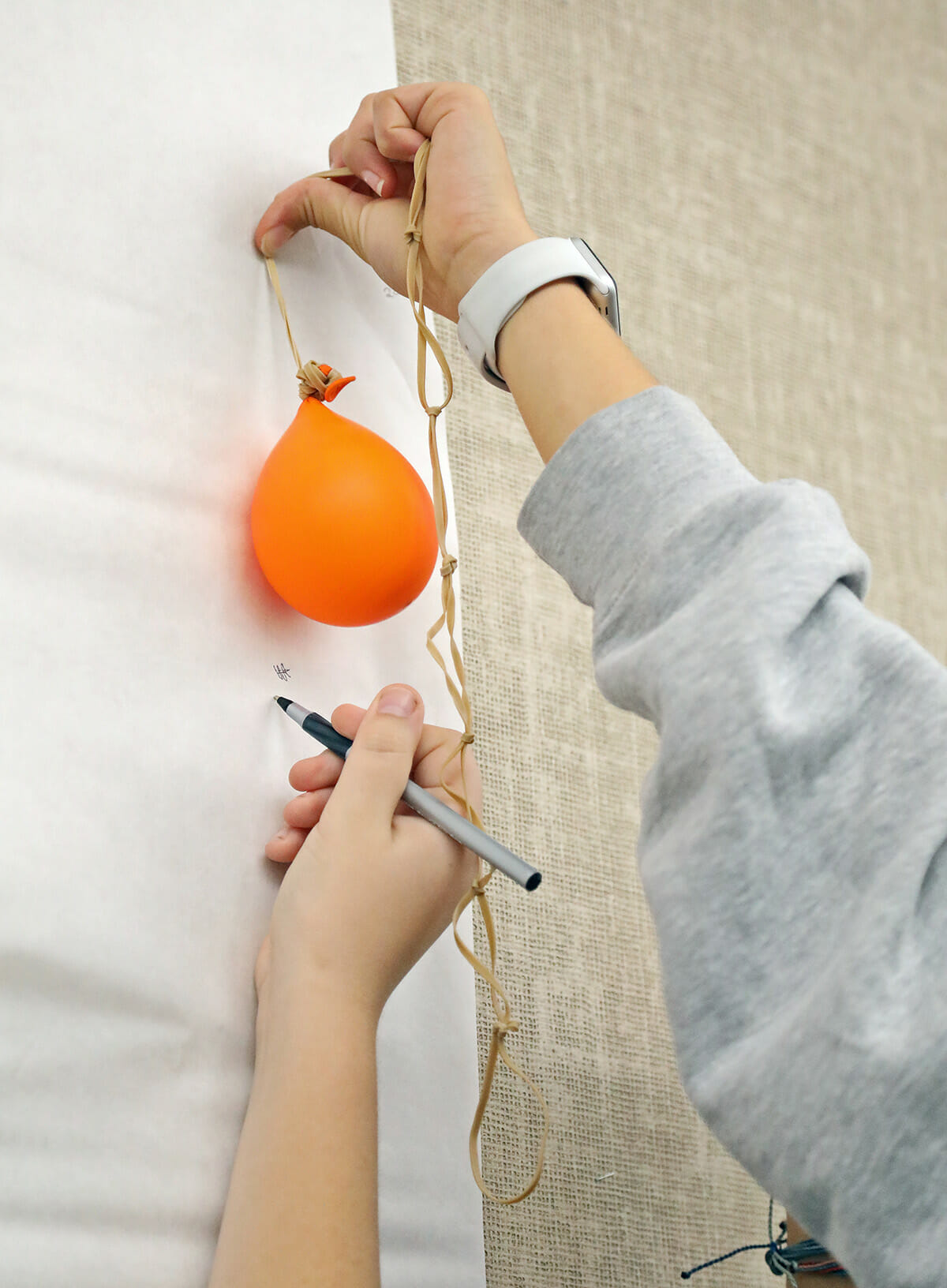What’s more fun than taking a test? Well, just about anything, but for 8th grade accelerated math students, a performance task involving rubber bands and water balloons is a lot more exciting and fun.
The students are learning about data analysis, and the first step in this performance task was for them to collect data. They tied rubber bands together and attached them to water balloons, then dropped the balloons from various heights. Their goal was to get as close to 200 cm as possible without the balloons bursting all over the 8th grade hallway.
This experiment has become something of a tradition for 8th grade accelerated math, and there has yet to be a mishap. “The very first year we used Barbie, He-Man, and stuffed animals, but water balloons work much, much better—they weigh more and they are much more fun to play with! Students take it a lot more seriously, too,” said Middle School Math Teacher Krystal White.
After collecting the data, students created a data table, graphed a scatter plot, drew a trendline, interpreted the data, and answered some real-life questions about the data and why it looks the way it does.
Our intrepid mathematicians received clear instructions to set up their experiment, including conducting the tests in a manner that did not disrupt the other groups of students or other Middle School classes. They hung their paper more than 200 cm above the ground and marked their starting drop points. Holding the end of the rubber bands at the jump line with one hand, they carefully dropped their water balloons with the other hand, marking on their papers the lowest point that the water balloon reached. They were told: Accuracy is paramount – your balloon depends on it! After the first drop, they continued attaching rubber bands for each new drop, using a slip knot, and marked the drop distance on the paper. They continued adding rubber bands and marking the drop distances until their balloons dropped as close to 200 cm as possible without touching the ground.
“Students can memorize vocabulary terms and processes and recite those for an assessment, but not really know the content with real depth,” said White. “The real test is when they are asked to apply all that they know to a real-world situation, because it requires them to integrate and apply their knowledge and respond to ‘messy results.’ Our AMA students conducted a lab start-to-finish as their Data Analysis Unit Test because a performance task was the most accurate demonstration of their actual knowledge and capabilities.”
Here are a few examples of their results. Great job, mathematicians!











